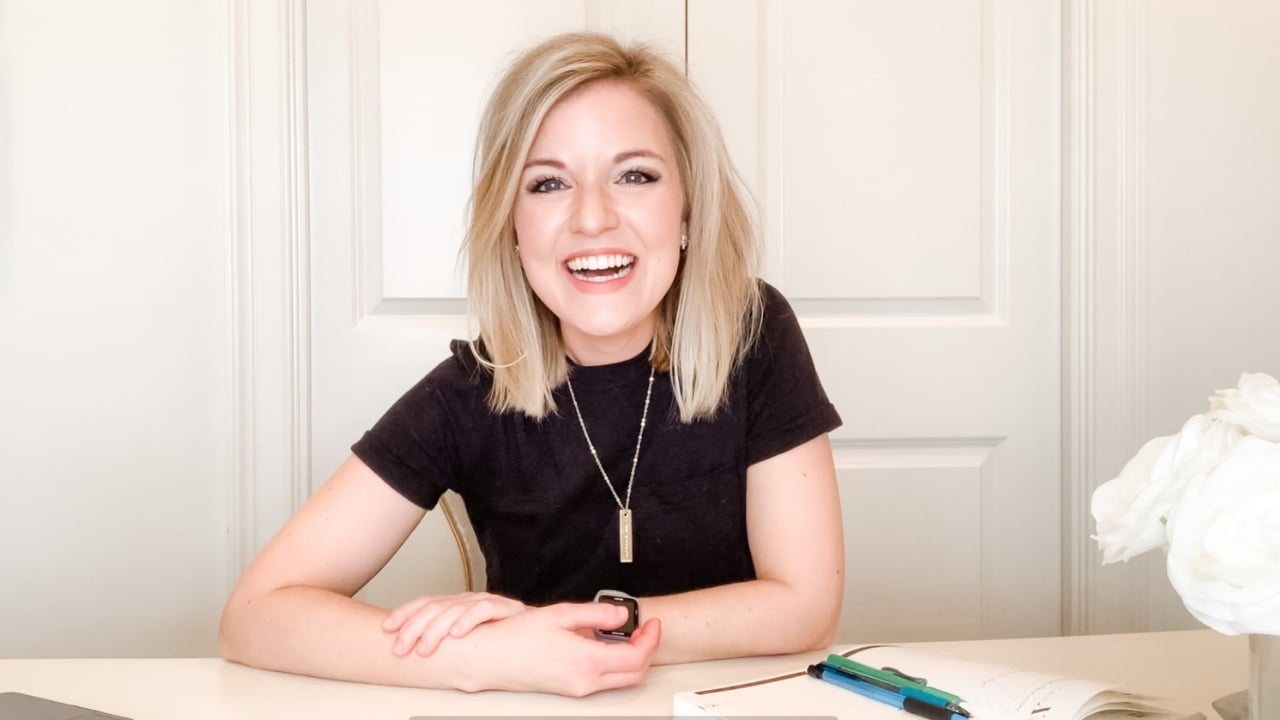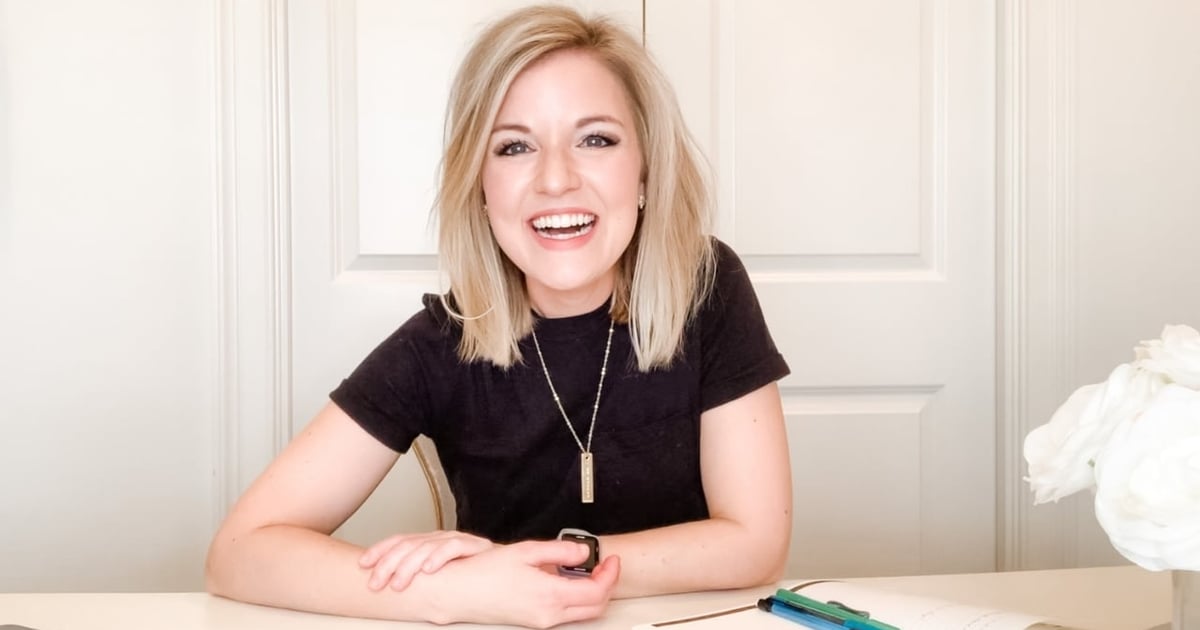
The hospital room was freezing cold. I stared at the blank wall in front of me, trying to ignore the flickering fluorescent light overhead. So much had changed in such a short time. Just three weeks before, I was making sure every last-minute wedding detail was in place, getting ready to settle into my new home with my new husband, excited to unpack boxes of wedding gifts and random knickknacks we’d collected over the years before our lives and our laundry mingled.
Up until that point, I worried about things like “Did I pay the florist?” and “Where are all my shoes going to fit in his tiny, 750-square-foot house with no closets?!”
Now, I was sitting here in this sterile, ugly room . . . waiting. Shivering. Terrified. Any minute, the nurse would come back and tell me it was time. I didn’t want to go. I wanted to stay right there, on this side of the unknown. I jumped as a loud knock at the door jerked me out of my thoughts. It was Alan, my husband. Never did the meaning of those vows “in sickness and in health” stab me in the heart more than they did in that moment.
Pathology results revealed that the cancer had started to spread. It felt like my body was going through the motions, but my head was struggling to keep up. I was just 25 years old, faced with the horrifying decision of either denying the radiation treatment and risking the cancer coming back, or going through with the treatment and risking infertility.

Growing up, my mom would tell me, “Getting sick is God’s way of slowing you down.” I’d roll my eyes and curse under my breath, because every day I stayed sick made my to-do list that much longer. Now, all I could think about was getting back to work. I felt restless, unsettled, and unfulfilled. I wanted to feel in control of my life again, and work was the only thing that felt normal. I wanted to stop feeling like I was aimlessly drifting and start moving forward with direction and purpose.
Control. That was a recurring theme in my life.
In fact, just six years earlier, I was in a similar situation. Different hospital, different exam room, different diagnosis, but the same core problem: the need to feel in control — and the unrelenting, never-ending anxiety I experienced when things felt out of control. I’d been through years of therapy, healing past hurts and deep-seated resentments that bubbled up to the surface when an anorexia diagnosis at 19 changed the course of my life as I knew it.
But now looking back, I began to recognize that healing is a journey. There’s no definitive start or end to it. Every day brings its own challenges. Every day, you have a choice: to learn how to navigate through it, or not. For me, many of the unexplained illnesses I’ve experienced over the years, from mental illnesses like anxiety and anorexia to physical conditions like migraines and perhaps even cancer, were physical manifestations of deeper emotional problems that were begging for healing. Namely, my relationship with my mom, and my relationship with myself.
In overcoming these challenges, there are five things I’ve learned that have helped me experience full healing, and I’m going to share them here in hopes that they will help you experience the same.
1. Pay attention to what your body is telling you.
Emotional wounds will often present themselves as physical problems in your body. You won’t learn this in biology class. It’s scientifically backed, but we have a long way to go before learning how to tune into the wisdom of your body becomes mainstream. When you experience physical pain, there is often a deeper emotional root cause. Look inward as well as outward.
2. Healing happens from the inside out.
By definition, emotional resilience refers to one’s ability to adapt to stressful situations or crises. The problem is that the coping mechanisms most of us use to adapt aren’t the best solutions for overcoming stress, overwhelm, or anxiety. Many people use work, substances, or other means to ignore or numb the deeper pain they’re feeling. However, ignoring or numbing the pain will only prolong the hurt. In order to fully heal, you have to develop the courage to look whatever you’re facing in the eye and recognize that you are stronger. Healing happens from the inside out, and by learning how to navigate through the pain (physical and emotional), you’ll be able to close that chapter in your life, put it behind you, and experience the hope of a fresh start.
3. Accept that healing is a process.
It won’t happen overnight, so don’t expect it to. When it comes to healing, it’s not a matter of how long it takes. It’s a matter of how willing you are to do the work required to experience lasting healing. The process won’t be perfect. There will be high points and low points, ups and downs. Allow yourself the do-overs, and keep your heart fixed on the truth that the degree to which you’re doing the work is the degree to which you’ll experience true healing and personal freedom.
4. Give yourself permission to heal.
To heal the pain, you must feel the pain. This is the part most people resist. Our culture teaches you to ignore pain and not feel it, so this concept can be foreign at first. But if resisting the pain hasn’t brought you healing, what causes you to think that more resistance will bring about more healing? It’s been said that what you resist, persists. Isn’t it more important that you learn how to navigate through the pain, so you can move forward? The process starts with allowing yourself to heal and recognizing that the best way out is always through.
5. Don’t go it alone.
There is no shame in seeking support. In fact, working with a trained professional will accelerate the healing process because they will be able to help you see things that you haven’t been able to see on your own. More importantly, they act as an objective third party; their sole purpose is to help facilitate your healing, without judgment. If you’ve had a bad experience with a therapist or doctor before, find a new one. Just because one person wasn’t a good fit for you doesn’t mean there’s no one out there who can help you.
If you feel helpless, alone, or unsure where to turn for support, consider calling the SAMHSA National Helpline (1-800-662-HELP) or google “mental health resources near me” to find trained specialists in your area who can help you work through the challenges you’re facing so you can be fully restored to health and wholeness. Battling an illness, whether physical or mental, can be scary, and you don’t have to go it alone.
Image Source: Courtney Elmer
